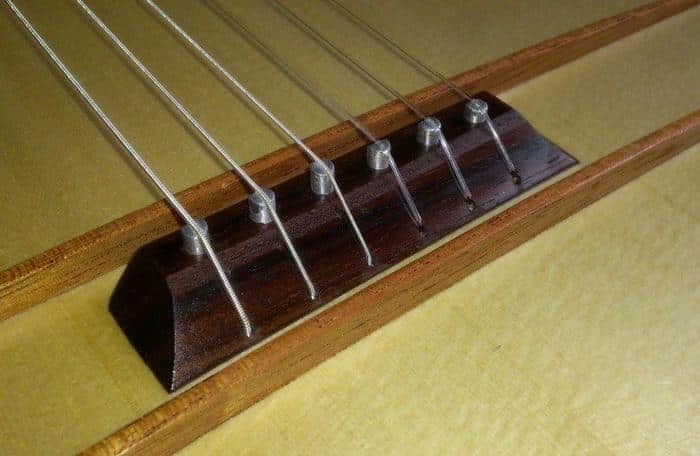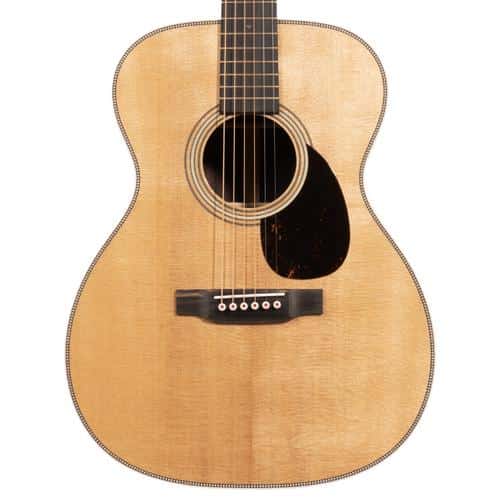Imagine a guitar with 100 strings, its neck as wide as a piano keyboard, producing a symphony of sounds unlike anything you’ve ever heard. As I stood before this musical marvel, my fingers itching to explore its vast fretboard, I realized how far the world of string guitars had come. From my first six-string at age six to this centenarian behemoth, my four-decade journey as a fingerstyle guitarist has been a testament to the instrument’s evolution.
In this exploration of string guitars, we’ll traverse the spectrum from these experimental wonders to classic models, unraveling the nuances between acoustic and electric guitars. My experiences have taught me that each guitar, whether it boasts 100 strings or the traditional six, has a unique voice waiting to be discovered. Join me as we delve into this fascinating world, where tradition meets innovation, and every strum tells a story.
The Evolution of String Guitars
From Traditional to Experimental Designs

Throughout my career, I’ve witnessed the fascinating journey from traditional to experimental guitar designs. The classic 12-string guitar was once considered innovative, offering a fuller, more resonant sound. However, modern luthiers have pushed boundaries even further. I’ve had the privilege of playing a 100-string guitar, an awe-inspiring instrument that challenges conventional playing techniques and expands sonic possibilities.
These experimental designs aren’t mere novelties; they’ve contributed significantly to our understanding of acoustics and inspired new playing styles. From carbon fiber bodies to fanned frets, each innovation has left its mark on guitar evolution. As a player and researcher, I’ve seen how these experiments have influenced even mainstream production, leading to hybrid designs that blend traditional craftsmanship with cutting-edge technology. This ongoing evolution ensures that the guitar remains a dynamic, ever-evolving instrument, capable of meeting the diverse needs of modern musicians.
The Rise of Modern Guitar Variations

As a performer and writer, I’ve had the privilege of witnessing the evolution of string guitars firsthand. The rise of modern guitar variations has been nothing short of revolutionary, breathing new life into this timeless instrument. Acoustic guitars have seen remarkable innovations in body shapes, materials, and sound projection techniques, enhancing their versatility across various musical genres. Meanwhile, the electric guitar has undergone a transformation that goes beyond mere amplification, with advancements in pickups, electronics, and ergonomics pushing the boundaries of what’s possible.
These developments have not only expanded the sonic palette available to musicians but have also democratized guitar playing, making it more accessible to beginners and inspiring seasoned players to explore new territories. Through my work with Acoustic Guitar magazine, I’ve documented how these variations have influenced playing styles, composition, and even the very definition of guitar music. This evolution reflects our changing musical landscape and continues to shape the future of string instruments.
Types of String Guitars
Acoustic Guitars: Nylon vs Steel Strings

As a versatile guitarist who blends folk, classical, and world music, I’ve come to appreciate the distinct qualities of nylon string guitars and steel string guitars. Nylon strings offer a warm, mellow tone that’s perfect for classical and flamenco styles. Their softer texture is gentler on the fingers, making them ideal for beginners or players who prefer a lighter touch. In contrast, steel string guitars produce a brighter, crisper sound that’s synonymous with folk, country, and rock music. They offer greater volume and projection, making them well-suited for strumming and fingerpicking techniques.
The choice between nylon and steel strings ultimately depends on your playing style and musical preferences. I’ve found that switching between the two has broadened my tonal palette and playing techniques, allowing me to explore diverse genres with authenticity. Understanding these differences is crucial when delving into the world of acoustic guitars and can significantly impact your musical journey.
Electric Guitars and Their Variations

As a musician who’s explored both acoustic and electric realms, I’ve come to appreciate the unique characteristics of electric guitars. Unlike their acoustic counterparts, electric guitars rely on pickups to convert string vibrations into electrical signals. This fundamental difference allows for an incredible range of tonal possibilities. Acoustic vs electric guitar playing experiences differ significantly, with electrics offering easier playability due to lighter strings and lower action. From the classic Fender Stratocaster to the iconic Gibson Les Paul, each model brings its own sonic flavor. Hollow-body and semi-hollow designs bridge the gap between acoustic and solid-body electrics, offering versatility for various genres. The world of electric guitars is vast, with countless variations in pickup configurations, body shapes, and hardware options, allowing players to find their perfect instrument for any musical style.
Unique and Experimental Guitars

In my journey exploring guitar innovation, I’ve encountered some truly unique and experimental designs that push the boundaries of what we consider a guitar. The 12-string guitar, with its rich, chorus-like sound, opened my eyes to the potential for expanding traditional designs. But that was just the beginning. I’ve had the privilege of playing a 100-string guitar, an instrument that challenges conventional playing techniques and produces an otherworldly soundscape. These experimental models often incorporate unconventional materials, unusual body shapes, or innovative tuning systems, each contributing to a distinct tonal palette.
While some may view these instruments as novelties, I’ve found that they offer valuable insights into string resonance and harmonic relationships. Experimenting with these guitars has not only broadened my understanding of the instrument’s potential but also influenced my approach to composing and performing on more traditional models. As we continue to explore the world of string guitars, these unique creations serve as a testament to the ongoing evolution and innovation in guitar design.
Choosing the Right Guitar
Factors to Consider When Buying a Guitar

As a seasoned guitar instructor and e-learning platform co-founder, I’ve guided countless students through the process of selecting their ideal instrument. When considering factors for buying a guitar, it’s crucial to balance personal preferences with practical considerations. Sound quality and playability are paramount, but don’t overlook the importance of build quality and visual appeal. I always recommend reading guitar reviews from reputable sources to gain insights into different models. If you decide to buy a guitar online, ensure the retailer has a solid return policy. Remember, the right guitar should inspire you to play more, regardless of its price or brand. Consider your musical goals, playing style, and budget to make an informed decision that will support your journey in the fascinating world of string guitars.
Beginner-Friendly Options

As a guitar teacher who started playing at six, I’ve seen countless beginners struggle with choosing their first instrument. That’s why I always recommend beginner guitar packs for newcomers. These all-in-one kits typically include a quality guitar for beginners, along with essential accessories like a tuner, picks, and a gig bag. They’re an excellent way to start your musical journey without breaking the bank or feeling overwhelmed by choices.
When selecting a beginner-friendly guitar, I advise focusing on playability and comfort. Look for instruments with low action (the height of strings above the fretboard) and a slim neck profile. These features make it easier to form chords and play scales, crucial for building confidence in those early stages. Remember, the right guitar can inspire you to practice more, accelerating your progress and keeping you motivated on your musical path.
FAQs
What is a 100-string guitar?
What are some classic string guitar models?
How many strings does a standard guitar have?
What are the main types of string guitars?
How do string materials affect a guitar’s sound?
Conclusion
From 6 strings to 100, from beginner to virtuoso, the guitar offers a lifetime of discovery. Are you ready to start your own guitar journey? As we’ve explored, the world of string guitars is vast and diverse, with options ranging from classic acoustic models to experimental electric designs. Whether you’re a novice seeking the best guitar for beginners or an experienced player looking to expand your horizons, there’s a perfect instrument waiting for you.
Throughout my journey, I’ve witnessed firsthand how guitars can transform lives and bring people together. From organizing community showcases to curating guitar festivals, I’ve seen the power of this instrument to inspire and connect. The guitar isn’t just an instrument; it’s a gateway to self-expression and creativity. As you embark on your own guitar adventure, remember that each string, each note, and each chord is a step towards mastery. The world of string guitars is waiting for you – are you ready to make your mark?